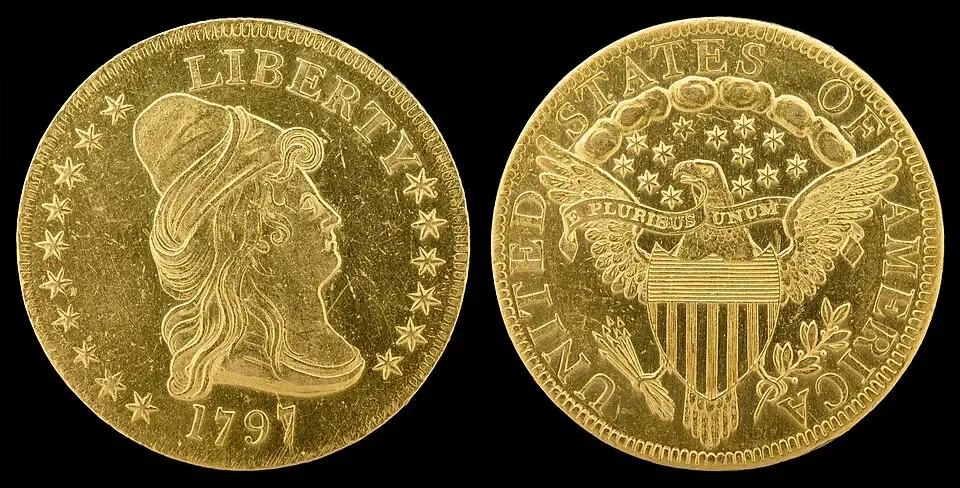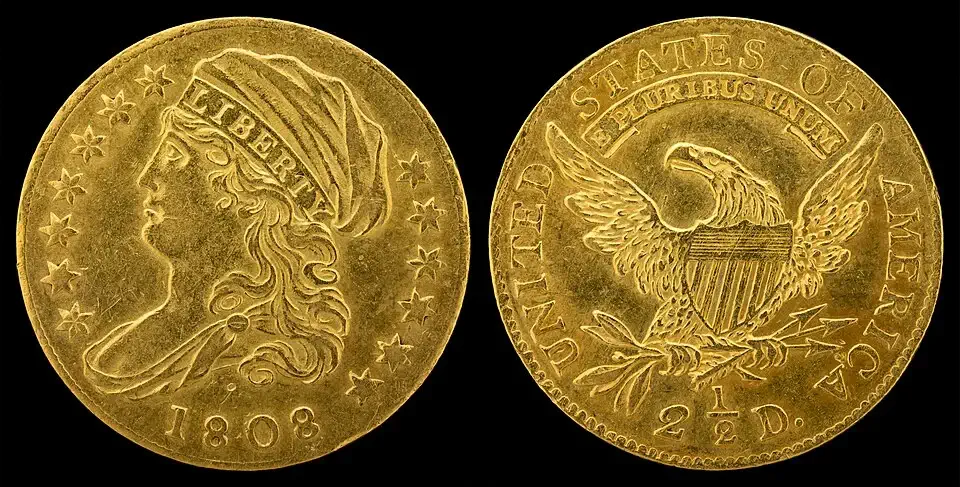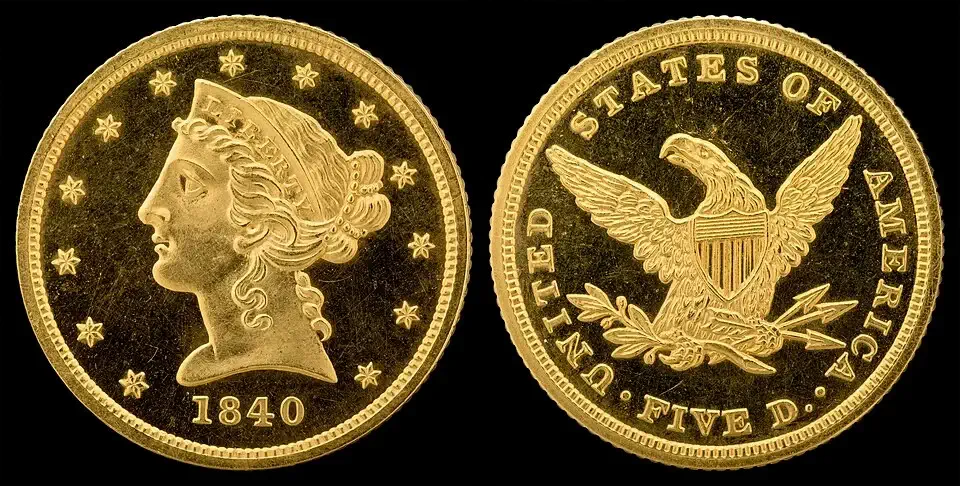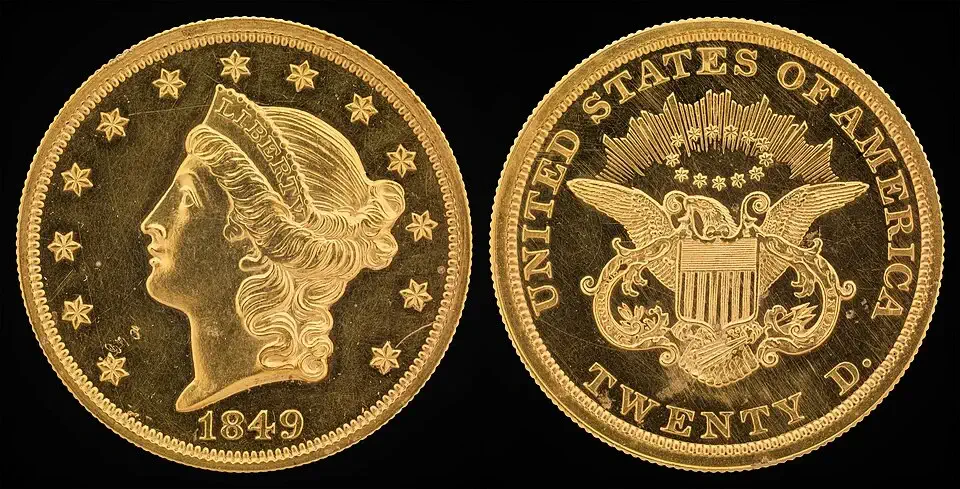Disclaimer
This article is for informational and educational purposes only and does not constitute financial advice. The author may hold positions in the assets discussed. Any discussion on jurisdiction, exchanges or custody providers reflect the author's personal views and experiences and is not a personal recommendation. Always do your own research and seek professional guidance before making investment or custody decisions.
Last Updated on September 23, 2025
The history of American gold coins is a fascinating numismatic journey over two and a half centuries. From the first Liberty Cap eagles of 1795 to the modern American Gold Eagle of the fiat era, the story of America’s coinage tells a story about the economic journey of the nation.
Whether you are interested in numismatics, the history of gold coins or are just curious about American coinage, understanding the evolution of American gold coins will reveal a lot about the growth of a young country into a major economic power.
Join me on this journey through time as we explore the most significant gold coins that shaped American numismatic history.
The Birth of American Gold Coinage (1792-1834)
- Key Events: This period marked the beginning of U.S. gold coin production. Yet due to Gresham’s law undervalued gold meant most was exported and did not circulate as currency.
- Key Designs: Capped Bust (Turban Head) and Capped Bust (Classic Head).
The Coinage Act of 1792 established the silver dollar as the nation’s monetary standard and authorised the United States Mint in Philadelphia to strike gold, silver and copper coins. Gold coin denominations were the eagle ($10), half eagle ($5), and quarter eagle ($2.50).
However it wasn’t until 1795 when the first gold coins were actually struck.
This first issue was the Capped Bust Right Half Eagle, designed by Chief Engraver Robert Scot. The original Capped Bust design features Lady Liberty wearing what is thought to be a Phrygian Cap, nicknamed “Turban Head” due to the obvious similarities. These Turban Heads were minted from 1795-1807.

After the disaster of the Continental Currency, this was a significant achievement for the young republic, demonstrating her commitment to sound money. Yet there were many challenges. The Mint’s equipment was poor, the skill of the craftsmen was limited as there was a lack of circulating gold.
The introduction of the Heraldic Eagle reverse in 1797 marked another milestone in early American coinage. The 1795-1797 coins had used a Small Eagle, whereas the Heraldic Eagle was larger, more stylised and based on the Great Seal of the United States. This patriotic design became synonymous with American gold coins for decades.
In 1807 the German, John Reich was appointed as assistant engraver under Robert Scot whose health was failing. Reich only stayed at the United States Mint for 10 years but his presence made a significant mark and brought revolutionary changes to the design of American coins.
His design was a more refined Lady Liberty facing left wearing a cloth cap inscribed with “LIBERTY.” While still a Capped Bust design, this marked a significant departure from the Turban Head style and became known as the Classic Head.

The period from 1792 – 1834 was also significant due to a lack of gold in the United States, which hampered both the production and use of gold coinage.
The 1792 Coinage Act had established the silver/gold ratio at 15:1. With the dollar defined as 24.1g of pure silver, the ration meant an ounce of gold was priced at $19.75.
The 1792 ratio was quite accurate but an increase in the supply of silver over the next several decades meant that eventually the market ratio moved away from the government ratio. This is a critical flaw in the bimetallic system.
As the additional supply of silver reduced its market value, the government ratio meant silver became overvalued relative to gold. Gold was thus undervalued relative to silver and flowed out of the country where a fairer market rate could be found.
This meant that much of the initial gold coin production in the United States was shipped overseas and melted down. Gold never really became a circulating currency.
The Liberty Head Era (1838-1908)
- Key Events: The 1834 Coinage Act puts the United States on a de facto gold standard. The 1849 California Gold Rush massively increased the supply of gold.
- Key Designs: Christian Gobrecht Liberty Head and James Longacre Liberty Head (Coronet Head).
Things changed in 1834 with a new Coinage Act. The silver/gold ratio was adjusted from 15:1 to just over 16:1. This adjusted the price of gold from $19.75 per ounce to $20.67 per ounce and made gold more valuable relative to silver.
Yet this was an overcorrection as the market ratio at the time was actually 15.625:1.
This meant that gold was now artificially overvalued. The result was that gold, which had been flowing out of the country, now flowed in. Circulating silver started to disappear and gold became the dominant form of money. This allowed the mint to start striking new coins.
A few years later in 1838 the first Liberty Head gold coins were struck, designed by Christian Gobrecht. This was a prolific era of gold coinage and coincided with the nation’s shift to the gold standard and the period of rapid industrialisation.
Liberty Heads were initially struck in denominations of $2.50, $5, $10, and remained in production for seven decades, until 1908.

The California Gold Rush of 1849 also revolutionized American gold coinage, flooding the market with the precious metal and enabling massive increases in production. The San Francisco Mint opened in 1854, followed by branch mints in Carson City and Denver. Each facility produced distinctive coins that collectors eagerly seek today, with Carson City issues commanding particular premiums due to their limited mintages.
The gold rush also had the effect of increasing the supply of gold, which upset the delicate bimetallic balance and lowered the price of gold relative to silver. The value of the precious metal in silver coins exceeded its face value which meant they were withdrawn from circulation and melted down. Suddenly there was a shortage of small denominations.
The U.S. Mint responded by introducing the $1 gold coin, first issued in 1849. The government also responded with the 1853 Coinage Act which lowered the silver content in all fractional coins and authorised the production of a $3 gold coin.
The large amount of gold bullion available also allowed the Mint to produce a $20 Liberty Head double eagle. These became workhorses of American commerce and are a widely collected coin. The 1849 Liberty Head was designed by James Longacre and is sometimes called the Coronet Head.

The Saint-Gaudens Era – America’s Most Beautiful Gold Coins (1907-1933)
- Key Events: President Theodore Roosevelt commissions the creation of new ore beautiful gold coins.
- Key Designs: The Saint-Gaudens eagle and double eagle. The Bela Lyon Pratt quarter eagle and half eagle.
1907 was a turning point in the history of American gold coins. President Theodore Roosevelt was unhappy with the quality of the nation’s coinage and wanted to create a more beautiful and artistic style.
Renowned sculptor Augustus Saint-Gaudens was commissioned to create a new gold eagle and double eagle.
The Saint-Gaudens double eagle is widely considered to be the most beautiful gold coin ever created. The obverse features a striking Lady Liberty, while the reverse features a glorious eagle soaring above the sun.
Saint-Gaudens also created the Indian Head gold eagle, featuring Lady Liberty wearing Indian headdress.
The new half eagles and quarters eagles were also Indian Heads, designed by Bela Lyon Pratt.
The tragic end of this magnificent series came with Executive Order 6102 in 1933, when President Franklin Roosevelt ordered citizens to surrender their gold coins and production was halted.
The 1933 double eagle became legendary when most of the approximately 445,500 that were minted were melted down. Only a few coins survived, making them the most famous and most expensive coins in the world. Only 14 are known to exist. Two are held by the Smithsonian, 11 by the U.S. Mint, while the last is privately owned.
The privately owned double eagle sold for over $18 million in 2021, cementing its status as the holy grail of American coin collecting.
Modern American Gold Eagles (1986-Present)
Executive Order 6102, signed by President Franklin Roosevelt on April 5, 1933, fundamentally changed the landscape of American gold coinage. The order required citizens to surrender most gold coins to the Federal Reserve in exchange for paper currency at the fixed rate of $20.67 per ounce.
During the prohibition era, Americans could no longer legally own most gold coins, with exceptions made for coins with recognized numismatic value.
That all changed on December 31st 1974 when a law came into effect allowing United States citizens to own gold once again.
However bullion production was not authorised until the Gold Bullion Coin Act of 1985 and did not resume again until 1986.
This landmark legislation authorized the creation of the American Gold Eagle program, designed to compete with popular international bullion coins like the South African Krugerrand and Canadian Maple Leaf.
However, ever since the Nixon Shock of 1971 the United States was no longer on the gold standard. Therefore these 1986 coins were not ever intended as circulating currency but rather investable bullion.
The 1986 American Gold Eagle design was based on Saint-Gaudens’ iconic double eagle and available in 1oz, 1/2oz, 1/4oz and 1/10oz.
It was minted in 22 karat gold or 0.9167 fineness.
Later, in 2006 the American Gold Buffalo was introduced to compete with 24 karat gold or 0.9999 fineness coins.
Conclusion
The history of American gold coins represents far more than monetary policy – it’s a golden thread woven through the fabric of the nation’s story. From the artistic triumph of Saint-Gaudens’ eagles to the economic necessity of early Liberty Caps, these precious metal masterpieces continue captivating collectors and historians alike.
Whether you’re drawn to the historical significance, artistic beauty, or investment potential, American gold coins offer something special for every enthusiast.
Image Credits
1849 $1 Gold Coin is in the public domain
Capped Bust Turban Head 1797 is in the public domain
Capped Bust Classic Head 1808 is in the public domain
Liberty Head Half Eagle 1840 is in the public domain
Coronet Head Double Eagle 1849 is in the public domain

![The Rentenmark: How Hyperinflation Was Solved In Germany [And 6 Lessons You Can Learn From It]](https://www.hardmoneyhistory.com/wp-content/uploads/2022/09/rentenmark.webp)

